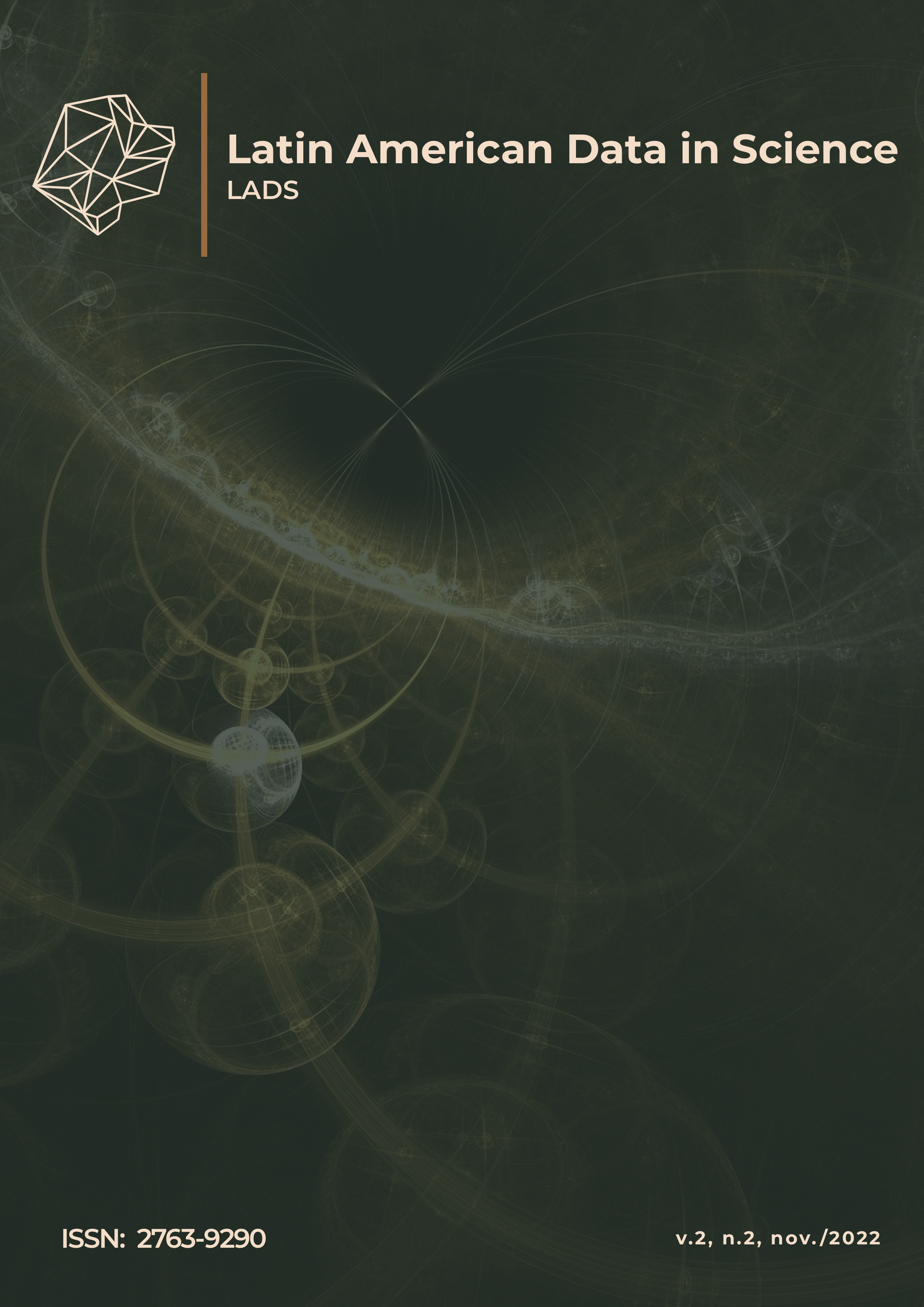Banco de dados de abelhas coletadas na APA Macaé de Cima, Nova Friburgo – Rio de Janeiro
DOI:
https://doi.org/10.53805/lads.v2i2.48Palavras-chave:
Pratos coloridos, Iscas aromáticas, Rede entomológica, Mata Atlântica, ApoideaResumo
As abelhas fazem parte do grupo de animais que realizam a polinização biótica. Tais polinizadores contribuem na manutenção da reprodução de boa parte das angiospermas, assegurando a perpetuação dessas espécies. Os polinizadores bióticos também desempenham um importante papel na produção de alimentos, destacando-se as abelhas como responsáveis pelo aumento na produção de frutos de 70% das plantas cultivadas. Neste estudo apresentamos os dados das abelhas coletadas na APA Macaé de Cima, no município de Nova Friburgo, no estado do Rio de Janeiro. Apesar de a região Sudeste ser uma das áreas com grande esforço amostral e maior riqueza no país, os estados do Rio de Janeiro e Espírito Santo apresentam-se com lacunas de conhecimento. Para o estado do Rio de Janeiro a maior parte dos levantamentos são focados na tribo Euglossini. A APA constitui um interessante ambiente de investigação sobre polinizadores, em especial as abelhas, por se tratar de um relevante remanescente de Mata Atlântica no Estado. As coletas foram realizadas com periodicidade de 40 (± 5) dias durante os anos de 2018 e 2019. Foram utilizadas três metodologias de coleta de abelhas diferentes: pratos coloridos, iscas de cheiro e redes entomológicas. Foram coletados 1105 indivíduos distribuídos em 103 morfoespécies, das quais 60 foram identificadas em nível de espécie. As espécies estão distribuídas em 21 tribos e 56 gêneros, pertencentes às cinco famílias ocorrentes no Brasil. Este material fornece dados da abundância e riqueza de abelhas ao longo de dois anos, para uma região onde não há levantamentos anteriores para o grupo. Além disso, há registros de interações entre abelhas e plantas contribuindo para o conhecimento das interações entre plantas e abelhas.
Referências
AGUIAR, W. M.; GAGLIANONE, M. C. Euglossine bee communities in small forest fragments of the Atlantic Forest, Rio de Janeiro state, southeastern Brazil (Hymenoptera, Apidae) Revista Brasileira de Entomologia 56(2): 210–219, junho, 2012. DOI: https://doi.org/10.1590/S0085-56262012005000018
ALVES-DOS-SANTOS, I.; PINHEIRO, M.; CORDEIRO, G. D.; KRUG, C.; GAGLIANONE, M. C. Monitorando a fauna de abelhas polinizadoras. In: IMPERATRIZ-FONSECA, Vera Lucia; CANHOS, Dora de A. Alves; SARAIVA, Antônio Mauro. Polinizadores do Brasil: Contribuição e perspectivas para a biodiversidade, uso sustentável, conservação e serviços ambientais. São Paulo, Editora da Universidade de São Paulo, p 361-368, 2012.
INEA - Instituto Estadual do Ambiente. APA Estadual de Macaé de Cima: plano de manejo – análise da UC. Módulo 3. Rio de Janeiro: Inea, 314p. 2014.
KRUG, Cristiane; ALVES -DOS-SANTOS, Isabel. O uso de diferentes métodos para amostragem da fauna de abelhas (Hymenoptera, Apoidea), um estudo em floresta ombrófila mista em Santa Catarina. Neotropical Entomology, 37(3): 265-278, 2008. DOI: https://doi.org/10.1590/S1519-566X2008000300005
MARTINELLI, G. Biologia reprodutiva de Bromeliaceae na Reserva Ecológica de Macaé de Cima. In: LIMA, Haroldo Cavalcanti; GUEDES-BRUNI, Rejane R (eds.). Serra de Macaé de Cima: diversidade florística e conservação em mata atlântica. Rio de Janeiro, Instituto de Pesquisas do Jardim Botânico do Rio de Janeiro, p. 213-250, 1997.
MICHENER, C. D. The bees of the world. JHU press, Vol. 1, 2000.
MOURE, J. S., URBAN, D., MELO, G. A. R. (Orgs). Catalogue of Bees (Hymenoptera, Apoidea) in the Neotropical Region - online version. Disponível em: <http://www.moure.cria.org.br/catalogue>. Acesso em:12/07/2020.
SAKAGAMI, S. F.; LAROCA, S.; MOURE, J. S. Wild Bee Biocoenotics in São Jose dos Pinhais (PR), South Brazil.: Preliminary Report. Journal of the Faculty of Science, Hokkaido University, 16 (2): 253-291, 1967.
Downloads
Arquivos adicionais
Publicado
Como Citar
Edição
Seção
Categorias
Licença
Copyright (c) 2022 Latin American Data in Science

Este trabalho está licenciado sob uma licença Creative Commons Attribution 4.0 International License.





